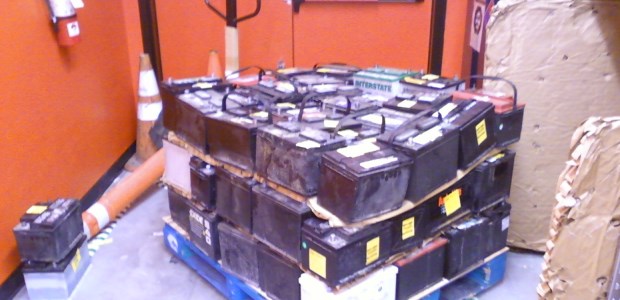
PHMSA Proposes 'Reverse Logistics' Definition in Hazmat Regulations
The agency's proposed rule defines training requirements associated with reverse logistics shipments; provides authorized packaging for reverse logistics shipments; sets segregation requirements for reverse logistics shipments; and allows more flexibility for the transportation of used lead acid batteries.
The Pipeline and Hazardous Materials Safety Administration published a proposed rule Aug. 11 that would add a section that defines "reverse logistics" to the Hazardous Materials Regulations (HMR), applying it to return shipments of certain hazardous materials by motor vehicle. The proposed definition is hazardous materials that are intended to be returned to or between a vendor, distributor, manufacturer, or other person for the purpose of returning for credit, recalling product, replacement, or similar reason. PHMSA's rule also handles a reverse logistics issue related to the transportation of used automobile batteries to recycling centers and says this change "will reduce the burden on the regulated community when consolidating shipments of lead acid batteries for recycling."
This NPRM follows an advance notice of proposed rulemaking that PHSMA published in July 2012 on this issue. Numerous shipping companies and organizations filed comments, generally supporting the proposal. Comments on the NPRM are being accepted until Oct. 10, 2014.
The agency says the NPRM will establish regulations for the shipment of hazardous material in the reverse logistics supply chain; define training requirements associated with reverse logistics shipments; provide authorized packaging for reverse logistics shipments; set segregation requirements for reverse logistics shipments; and allow more flexibility for the transportation of lead acid batteries.
Existing hazmat regulations don't provide a specific exception for shipments made in the reverse logistics supply chain, which means a hazardous material that is shipped from a retail outlet back to a distribution facility is subject to the HMR in the same manner as the original shipment to the retail outlet. "The retail outlet is fully subject to the shipper's responsibility requirements provided in § 173.22 of the HMR. Key shipper responsibilities include classification, selecting a packaging, closing the packaging, communicating the hazard, and ensuring the employees are properly trained in the functions they perform. In conducting enforcement actions and outreach, we have learned that these requirements are often misunderstood or overlooked. In addition, PHMSA received two petitions requesting that we take action to provide reverse logistics requirements in a single section that is both clear and easily understood," the rule states.
It says investigations conducted by PHMSA field operations staff found instances where damaged hazardous materials were shipped from retail outlets back to distribution centers without proper packaging or segregation, as well as hazardous materials and packages being damaged or compromised. Employees at the retail outlets responsible for packing and shipping these materials often lack hazardous materials training, which may result in inadequate packaging and hazard communication, according to PHMSA.